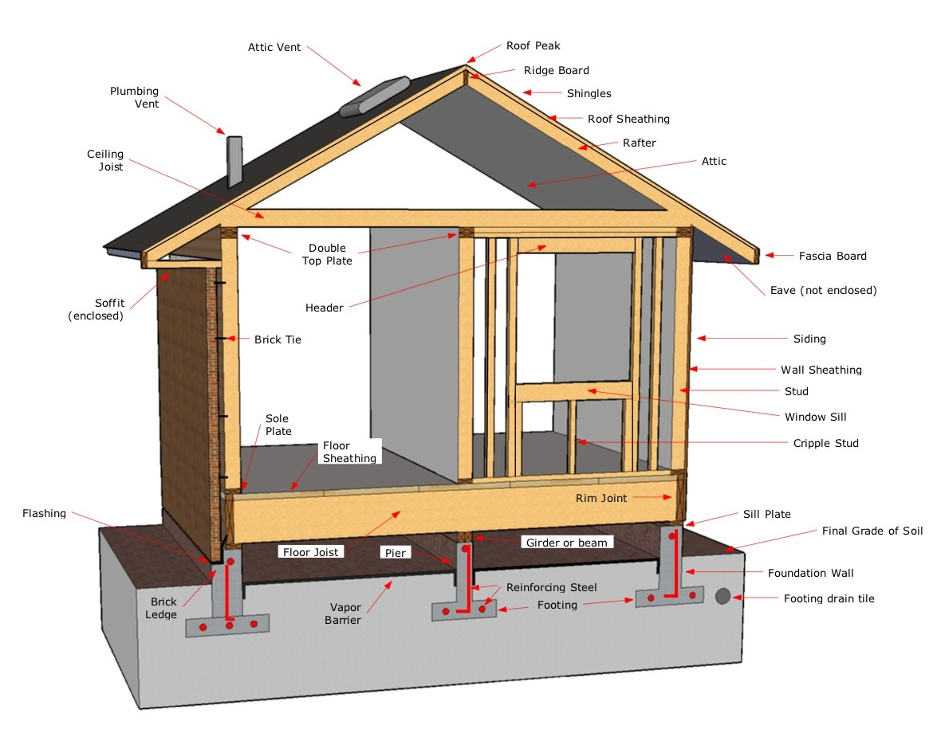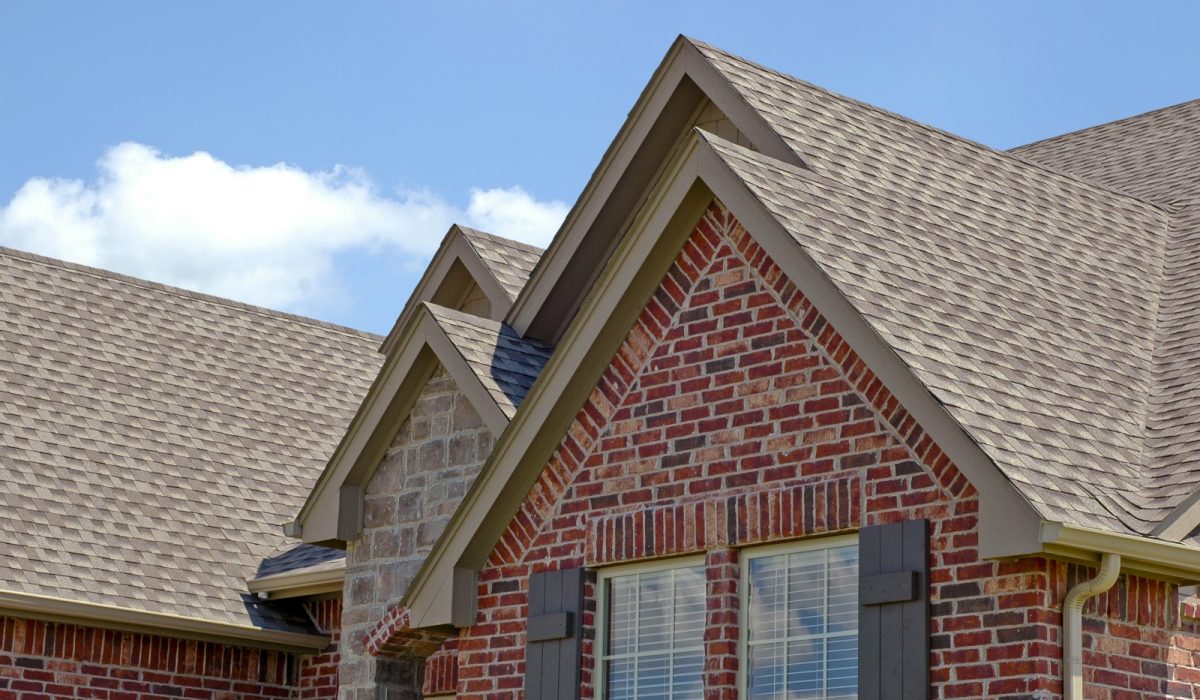- Roofing Materials
- 1 Comment
“What is a Roof and What Does it Do?”
What is a roof and what purpose does it serve? Have you ever given much thought to these questions? If you’re like most homeowners, then the answer to this question is probably no. We may tend to notice things like how the color of our storm shutters compliment the color of our shingles or how our aluminum gutters are barely noticeable against the backdrop of our roof, but why? In this article, we will talk about not only the anatomy of a roof, but the importance of its functions.
A roof cover system is an assembly of components designed and installed to weather-proof and insulate a home while completing its structural integrity. The primary function of a roof is to keep water out of your home (which is achieved by each of its components working together), but it’s a little more than that. Aside from being the outermost layer of your home, which provides shelter from the elements, your roof also ventilates your home. This is important in regulating the temperature inside of the home as well as preventing moisture in the attic which could promote the growth of mold.

(A roofing cover system works in concert with your homes framing to distribute wind pressure)
When the roof of a home is properly vented and insulated, it directly increases the home’s energy efficiency. As you might imagine, the opposite is also true; a home that has a poorly vented roof cover system has to work much harder to maintain a comfortable and ambient indoor temperature. You may be wondering, how does a poorly ventilated roof system present itself in ways I can actually identify? That’s a great question! Poor ventilation can be experienced by experiencing mold, drafts, and even increased utility bills.
Now that we’ve touched on ventilation, let’s jump into framing and talk a little bit about how it relates to your roof. It may seem obvious to say, your home is built on its foundation. Whether on a reinforced concrete slab or CMU pilings, the foundation is the lowermost loadbearing part of a house. It allows the weight or “load path” of a home to be distributed evenly to the ground and protects it from water or soil movement. Exterior walls are constructed on the foundation, creating the shell in which windows and doors can be installed. Additionally, exterior walls also have exterior finishes, such as vinyl siding, brick, or stucco.
The framework that is responsible for connecting the exterior walls of a home are its joists. Ceiling joists can be easily identified from the interior of a home as they will be where ceiling fans or “can lights” are attached. From the attic, they make up the cavities that hold the majority of a home’s insulation, essential for climate control.
The final piece of the puzzle that is your home’s framing, is the roof. Attached to the ceiling joists at an angle of the exterior walls, creating the slope of your roof, are the rafters. These uppermost pieces of your homes framing not only allow for a continuous load path; but also create the substrate on which decking, shingles, and the rest of the roofing components will be installed.

In the same way that the framing of your home is built in layers, lending each section a role in the overall function, your roof cover system is as well. The first component of a roof is the decking or sheathing, which is typically plywood or osb(oriented strand board). Being nailed directly to the rafters, the decking will provide the base on which the rest of the roofing materials will be installed and attached. With each sheet of decking spanning multiple rafters, they provide the necessary weight distribution required for asphalt shingles, about 60 lbs. per bundle. With an average 3,000 sq. ft. home requiring around 90 bundles of shingles, it’s easy to see the importance of roof decking and its condition.
Once the roof deck is in place, an underlayment is installed. Whether using a felt or synthetic material, underlayment is responsible for providing a moisture barrier; aiding in your homes ventilation and providing the base on which the shingles will be installed. Often overlooked, ice & water shield is a type of underlayment that is installed at the eaves and valleys of a roof to mitigate damage caused by either heavy rain or snowstorms. Think of your roof’s underlayment like a raincoat, offering protection from inclement weather.

Once your choice of underlayment has been installed, your roof is ready to receive a drip edge. Whether you’ve chosen to have them painted to match the color of your shingles or not, the drip edge is installed over the underlayment, securing it to the fascia. This material is made from galvanized metal to prevent rusting while it directs water flow away from the roof.
Before the first course of shingles can be installed, a starter strip is run at the edges of the roof. Starter strip is a type of asphalt shingle that offers a secure base for shingles to be installed. It ensures proper installation while providing a tar adhesive to protect against water and wind. The edges of a roof are more susceptible to wind damage, a starter shingle is designed to limit this uplift pressure. Next, the ventilation is installed. Whether your roof requires ridge vent, power vents, gable vents, or a combination of these; as we discussed earlier, ventilation is vital not just to having a properly operating roofing system, but the entire ventilation system throughout your home.
Lastly, we have shingles. With shingle types ranging from 3 Tab (Builder’s Grade) to Architectural; Luxury to Class IV Impact Rated; or Algae Resistant, this is the one part of our roof that we can actually see. There are many different choices with many subtle differences, their main purpose is to provide the outermost layer of protection to our home. When choosing the best shingle for your roof, consider things like durability, lifespan, and budget.
When you choose to work with H2H Roofing, you can rest assured that we will:
- Clearly guide you through the entire process of your roof replacement project
- Present and Assist you in selecting the best components for your roofing needs
- Utilize the latest industry standards and practices in the installed of your new roof
Our collaborative approach to familiarizing and educating homeowners with their new roof will give them the confidence and knowledge needed to maintain them for many years to come! Reach out to us at H2H Roofing if you think your roof is in need of maintenance, we’ll send our Home Advisors out to give you a complimentary inspection, and they’ll have a conversation with you about the condition of your roof.


1 Comment
Comments are closed.